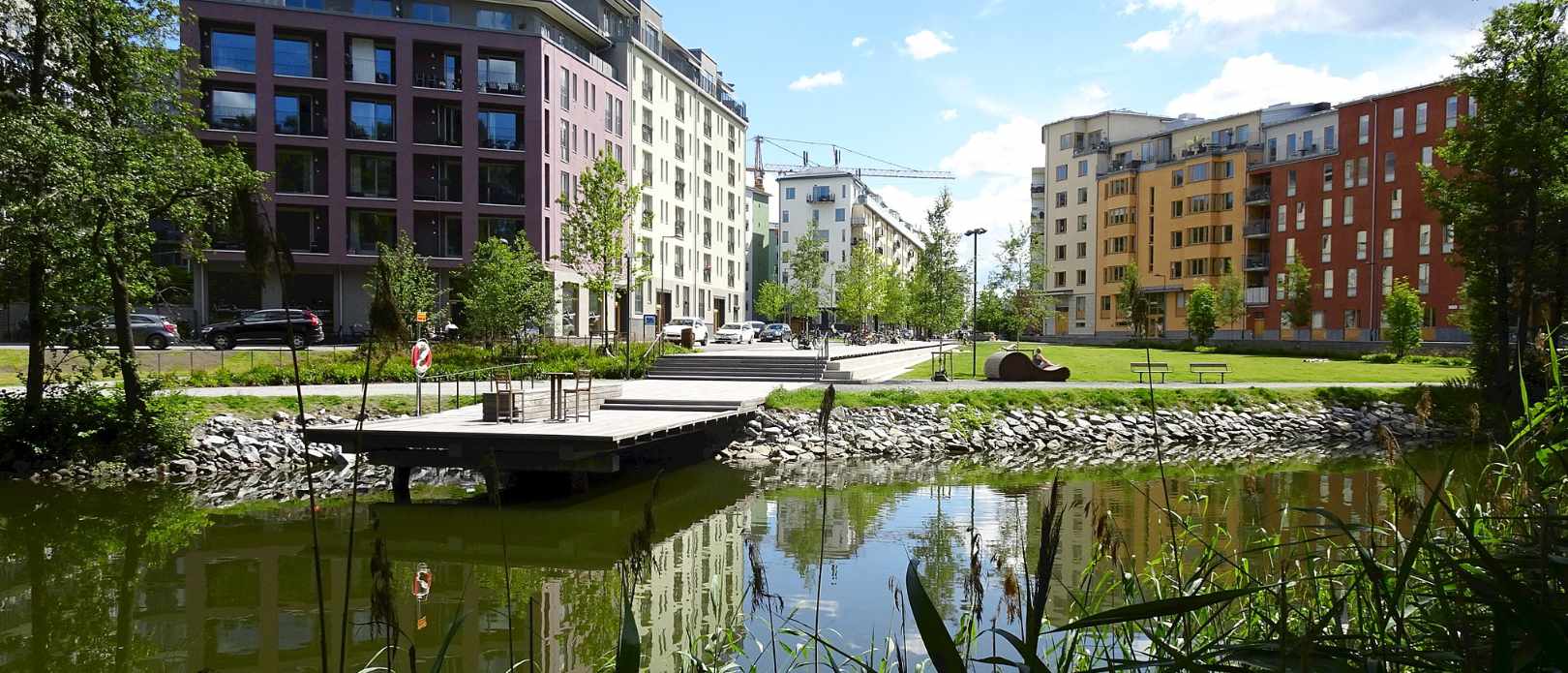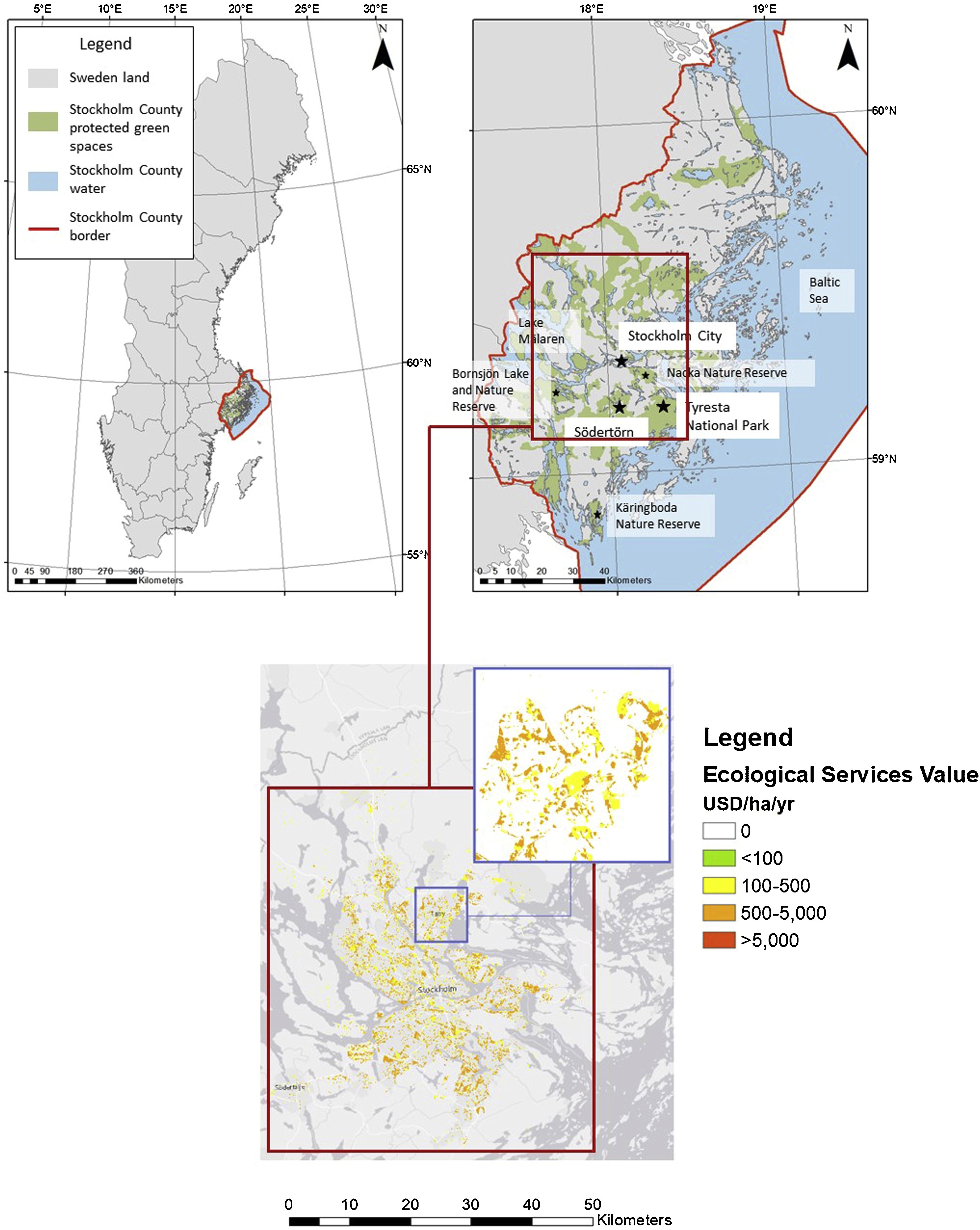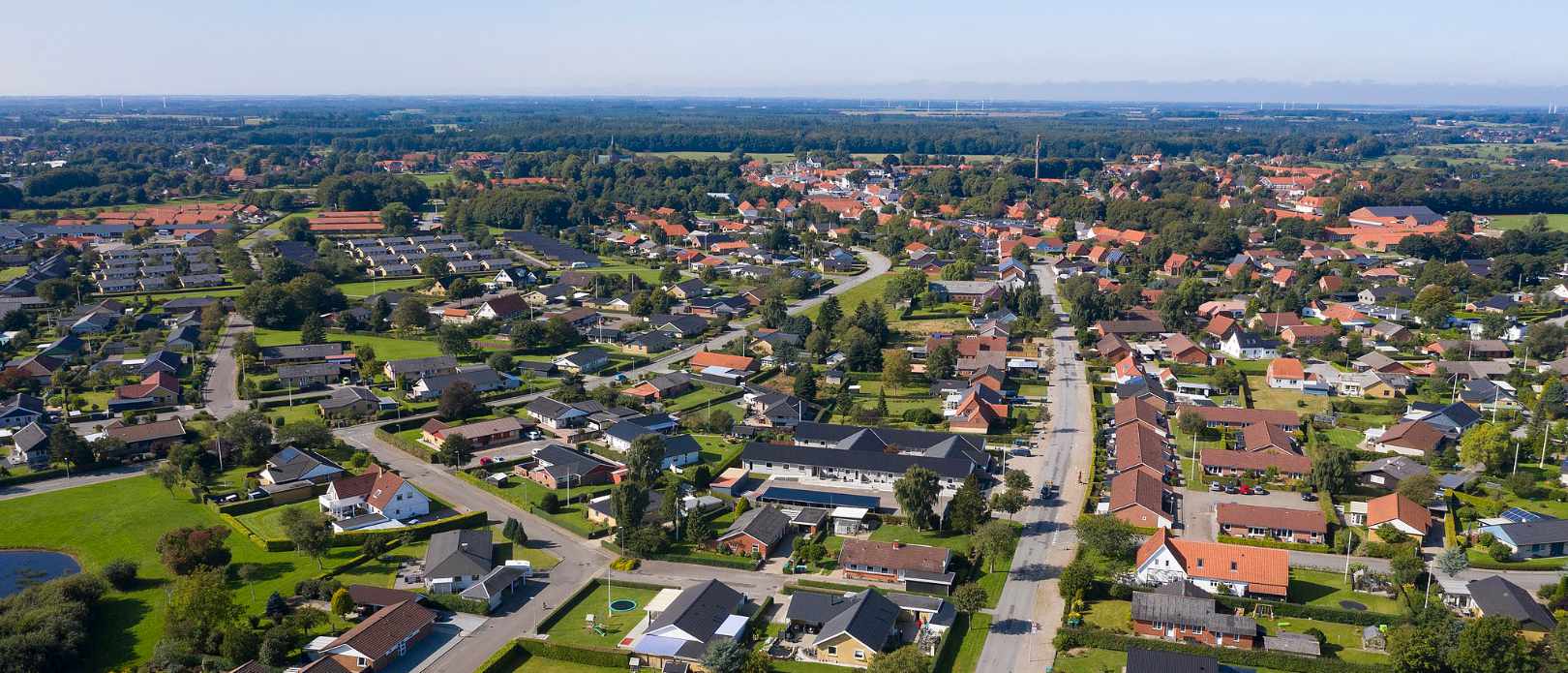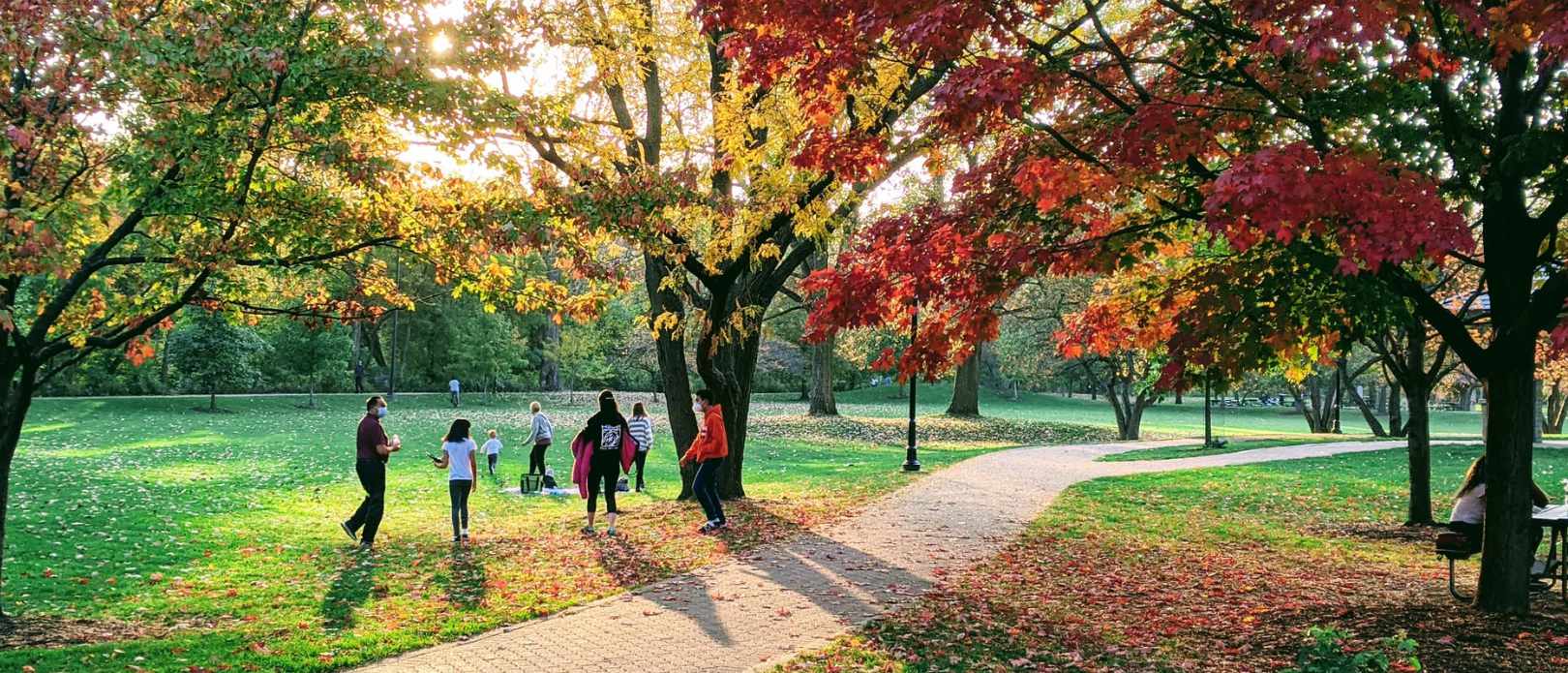URBAN DEVELOPMENT
Proximity to green boosts building projects

A study in Anthropocene shows that residential and commercial land-use projects are more likely to happen in areas with good connectivity to ecosystem services. Pictured is the Norra Djurgårdsstaden in Stockholm, a residential area build adjacent to the city's national urban park. Photo: H. Ellgaard/Wikimedia Commons
Proximity to ecosystem services raises the value of residential and commercial areas around cities. Future projects should focus more to keep it that way
- Residential and commercial land-use projects are more likely to happen in areas with good connectivity to ecosystem services
- Stockholm County was used as case study to identify the future likelihoods of urban expansion
- The researchers suggest several strategies to keep the construction and building impact on nature to a minimum
BUILD CLOSE TO NATURE: You might be a city slicker enjoying all the benefits of the urban jungle, but life without nature is still hard to imagine. Several studies have documented that access to green areas is not only good against climate change it is also a boon for your health and well-being.
A study recently published in Anthropocene adds further substance to this argument by demonstrating how proximity to nature is also a driver for urban development. Specifically, the study shows that residential and commercial land-use projects are more likely to happen in areas with good connectivity to ecosystem services.
The paper is lead authored by Haozhi Pan from Shanghai Jiao Tong University together with several researchers from Stokcholm University, including centre researcher Stephan Barthel.
Our results show that ecosystem services values are an important driver of land use and cover changes related to urbanisation.
Stephan Barthel, co-author
Stockholm as a case study
Using Stockholm County as their case study, the authors map ecosystem services around the county to identify the future likelihoods of urban expansion. Stockholm is growing rapidly and is expected to accommodate a population of 3,5 million by 2050, up from approximately 2,4 million today.
A main goal is make sure there is infrastructure for this growth, while maintaining a pleasant urban environment and increasing sustainability. That means safeguarding several green areas that provide important ecosystem services.
Most new developments in Stockholm are projected to be close to existing urban centres, such as in areas around the Tyresta National Park and the Södertörn region. Both areas offer a good access to both nature and employment.

Site location, important social and natural landmarks, and spatial distribution of ecosystem services values analysed in the study.
Minimizing impact
But increased building activity will inevitably put a burden on the green areas despite efforts to protect them. To counter this, the researchers suggest several strategies to keep the impact to a minimum: natural preservation zoning, ecosystem redlining and green architecture solutions.
In areas where the correlation between ecosystem services and urban development is less balanced, Barthel and his colleagues suggest other measures:
Areas with high ecosystems services accessibility but low development probabilities, greenbelts can help prevent rapid changes into areas of high development.
Areas with low ecosystems services accessibility-high development, investments in ecosystems restoration and aesthetic, cultural, and recreational ecosystems are suggested.
“While these specific strategies apply to the case of´Stockholm, the examples of the approach of integrating nature- based solutions are generalizable to other areas undergoing urbanization,” the authors conclude.
Methodology
The social-ecological model for land use and land cover change in this study comprises four main components.
They are: 1) an evaluation of territorial ecosystems services values based on land
cover types 2) identifying the spatial relationship between existing built-up urban land use (residential and commercial land use cells), socioeconomic variables (population centers, employment centers, transportation accessibility), and the ecosystems services values; 3) a forecasting model of future probability for land use and land cover change based on identification of ecosystem services and socioeconomic variables; and 4) correlation analysis between ecosystem services and probability for land use and land cover change. To build the model, researchers used data on population centers, employment centers, transportation networks, environmental amenities (water and forest), and land cover (residential, commercial, forest, and water cover).
They estimated the ecosystem service values (ESV) of each land cover type using the land cover map and the Economics of Ecosystems and Biodiversity (TEEB) database. For each land use type, we used the total economic value assessment from the closest or most similar places to Stockholm from the TEEB database.
Pan, H., Page, J., Cong, C., Barthel, S., Kalantari, Z.. 2021. How ecosystems services drive urban growth: Integrating nature-based solutions. Anthropocene Volume 35, September 2021, 100297, http://dx.doi.org/10.1016/j.ancene.2021.100297








